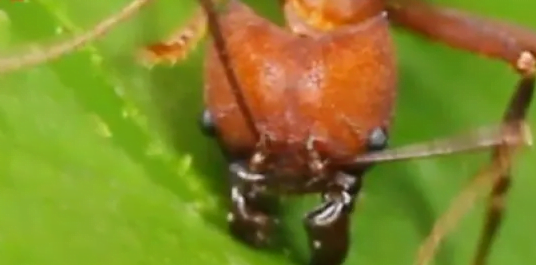As the climate warms the planet and temperatures rise, some fungi are figuring out how to exist at higher temperatures than they normally like. Enter zombie concerns.
Some real-life fungi are already gruesome, including one that turns ants into zombies. Could it soon jump to humans, an evolution fueled by a warming world? That’s the plot of HBO’s popular show “The Last of Us.”
And while scientists aren’t worried about that particular scenario, they say climate change could usher in a new wave of fungal infections in humans.
“Maybe it becomes easier for them to adapt to even higher temperatures and become pathogens in humans,” said Dr. Thomas Chiller, chief of the Mycotic Disease Branch at the Centers for Disease Control and Prevention.
Let us repeat – there is no danger that climate change is going to soon bring on the zombie apocalypse. But it could be bringing some old and unpleasant diseases to the fore as well as allowing new diseases to emerge.
Here’s what to know about fungal infections and climate change:
Not really, experts say.
“The Last of Us,” a popular TV series based on an equally popular video game also called “The Last of Us,” takes place in a post-apocalyptic world. There, a newly-mutated fungus that kills and controls its host’s body has overtaken humanity, spreading by bites and turning most people into zombies. Referred to in the show as “infected,” these beings are covered in porous growths, can run and are hard to kill.
Perhaps the most unrealistic part of the show is how quickly the fungus overtakes the world, experts suggest. It would take far longer than the two decades during which the globe descends into draconian chaos in the TV show, said Matthew Kasson, an expert on fungus-insect interactions at West Virginia University.
“It would take millions and millions of years of optimization over evolutionary history,” he said.
What are fungi?
Fungi are spore-producing organisms that feed on organic matter and include molds, yeasts and mushrooms. They’re critical to the environment because they decompose things, breaking down dead plants and animals so they can go back into the soil food web. They’re also used to make bread, beer and some medicines.
“Generally when we’re talking about fungi we’re villainizing them because they’re capable of doing pretty nasty things. But they’re also doing great things hidden in plain sight every day,” said Kasson.
Is climate change making fungal infections more dangerous?
In some instances, fungal infections are becoming more of a problem due to climate change, researchers have shown, as some fungi are adapting to warmer temperatures.
Fungi thrive in cold, moist conditions: That’s why they tend to infect cold-blooded creatures like ants and cicadas rather than warm-blooded mammals.
That may be changing: “Fungi are beginning to adapt to grow at mammalian body temperatures,” said George Thompson, a professor of medicine at the University of California, Davis.
Humans’ body temperatures usually protect us: There are as many as 5 million different fungal species but only a few hundred that cause human diseases, notes Chiller.
Important quote: “As the environment warms and these organisms adapt and can live at higher temperatures, the threshold that protects us from them is lowered,” said Thompson.
What are some human fungal diseases that could get worse?
Several fungal diseases that can infect humans have either been increasing their range or appearing for the first time in the past several decades as temperatures have warmed.
Candida auris: This is a fungus that was rare in humans before 2009. “It independently emerged at four sites around the world with three unrelated strains,” said Thompson. “The current hypothesis is it must be adapting to a warmer environment.” It causes blood infections in health care settings.
Sporothrix brasiliensis: This is an emerging fungal pathogen that first appeared in Brazil and is now on the move in South America. Cats get it from the environment and develop open lesions on their faces, paws and other parts of their bodies. “The cat would just shake its head and the spores would come and infect the eyes and even the skin of the veterinarian,” said Chiller. What’s concerning is that previously this type of fungus in its spore form couldn’t infect others. “Guess what? They do now,” he said.
Coccidioides: This can cause a debilitating disease called Valley Fever in susceptible individuals. It used to be thought it could only exist in the arid Southwest and California but now it’s appearing as far north as Washington state.
Histoplasmosis: This fungus is especially found in the central and eastern states, especially areas around the Ohio and Mississippi River Valley, but it is actually found worldwide.
Blastomycosis: Typically found in the northeast of the United States, including Minnesota, Wisconsin and Indiana. Some scientists suggest drier summers and wetter winters, associated with climate change in some parts of North America, may create optimal conditions for its dispersal.
What is the ‘zombie ant fungus’ that inspired ‘The Last of Us’?
“The Last of Us” is tangentially based on the Ophiocordyceps unilateralis fungus. It’s pronounced O-fio-cord-eh-septs Un-i-lat-er-al-is but you can call it the zombie ant fungus.
A spore invades the ant and through a combination of chemical and physical manipulation, forces it to leave what it’s doing and climb to a high perch. Then it coerces the ant to perform a “death grip, biting down on a leaf or a twig so it’s affixed to that spot,” said Kasson.
source: ustoday










